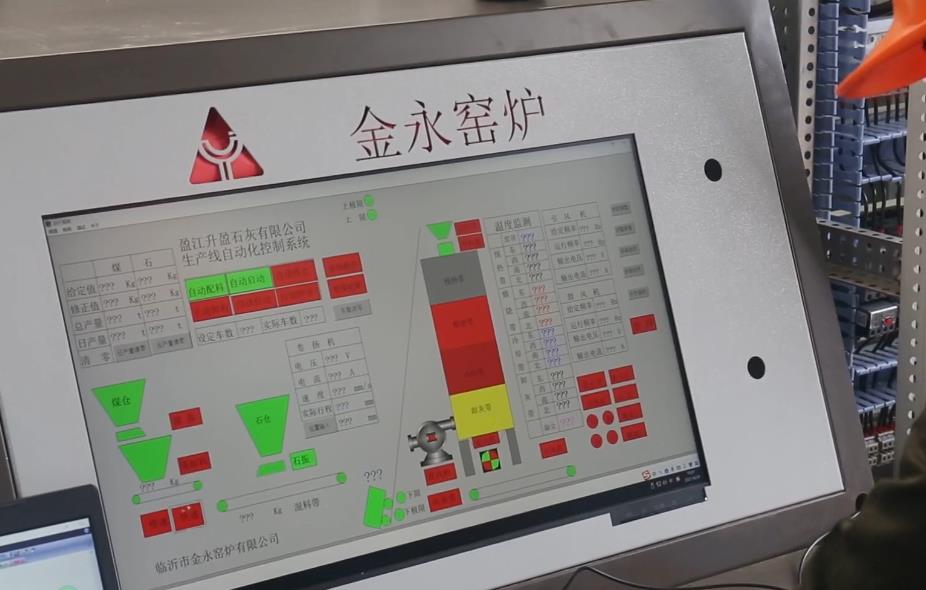Overview of PLC Application in China Lime Kiln Automation Control System
In the field of automation control for lime kilns in China, PLC (Programmable Logic Controller) is the core control equipment, and its selection and application directly affect production efficiency, product quality, and system stability. At present, the mainstream lime kiln automation control systems in China generally adopt international brands such as Siemens and Schneider PLC, among which Siemens PLC dominates with its technological advantages.

The application advantages of Siemens PLC
Siemens PLC is widely used in the automation control system of lime kilns in China, with core products including S7-300, S7-400, and S7-1500 series. Taking S7-300 as an example, this series of PLCs adopts modular design and has high-speed processing capability (such as the processing speed of the CPU15-2DP module can reach 0.03 μ s/instruction). It can flexibly expand digital/analog input and output modules to meet the real-time control requirements of complex processes in lime kilns. Its built-in PID control algorithm, motion control function, and PROFIBUS-DP/PROFINET communication protocol enable it to efficiently integrate subsystems such as temperature detection, weighing and metering, and fan frequency conversion.
In the redundant control system of the dual chamber lime kiln, the Siemens S7-417-5H CPU achieves fault free switching through dual machine hot standby and redundant fiber optic connection, significantly improving system reliability. This configuration supports dual ring network communication and redundant ET200M remote rack, ensuring real-time acquisition and precise control of parameters such as temperature and pressure inside the kiln.

Application characteristics of other brands of PLCs
Schneider PLC also has certain applications in the field of lime kilns with its M340 series. This series adopts BACnet/IP protocol and supports seamless integration with third-party devices. Its built-in energy management function can optimize the energy allocation of lime kilns. In addition, Schneider PLC's EcoStruxure architecture provides a comprehensive solution from the device layer to the cloud, facilitating remote monitoring and fault warning.
Some companies also adopt domestic PLC brands (such as Envision, Delta, etc.) to meet specific process requirements through customized development. For example, when combined with expert control systems, Envision can achieve adaptive adjustment of the calcination curve of lime kilns, but its market share is relatively small.
System integration and functional implementation
A typical lime kiln automation control system adopts a two-level architecture: the lower computer consists of PLC, secondary instruments, and strong electrical parts, which complete data acquisition and basic control; The upper computer realizes visual monitoring through industrial control computers and configuration software (such as WinCC). The system needs to integrate the following functions:
Temperature closed-loop control: Nonlinear PID algorithm is used to adjust the gas flow rate and air ratio, ensuring that the temperature inside the kiln is stable at 900-1100 ℃.
Weighing and measurement: The accurate ratio of stone and coke is achieved through the SIWAREX U-2 weighing module, with an error of ≤ 0.1%.
Safety interlock: Real time monitoring and interlock protection of parameters such as negative pressure and fan status in the kiln based on PLC logic programming.
development trend
With the advancement of Industry 4.0, the automation control system of lime kilns is gradually upgrading towards intelligence. The new generation PLC (such as Siemens S7-1500R/H) supports OPC UA communication protocol and can seamlessly integrate with MES/ERP systems to achieve cloud storage and analysis of production data. At the same time, the introduction of AI algorithms enables the system to have predictive maintenance capabilities, further reducing the risk of unplanned downtime.
Overall, the PLC selection of China's lime kiln automation control system presents a pattern of "Siemens as the leader, multiple brands coexisting", and the technological development trend focuses on intelligence, networking, and energy efficiency optimization.





